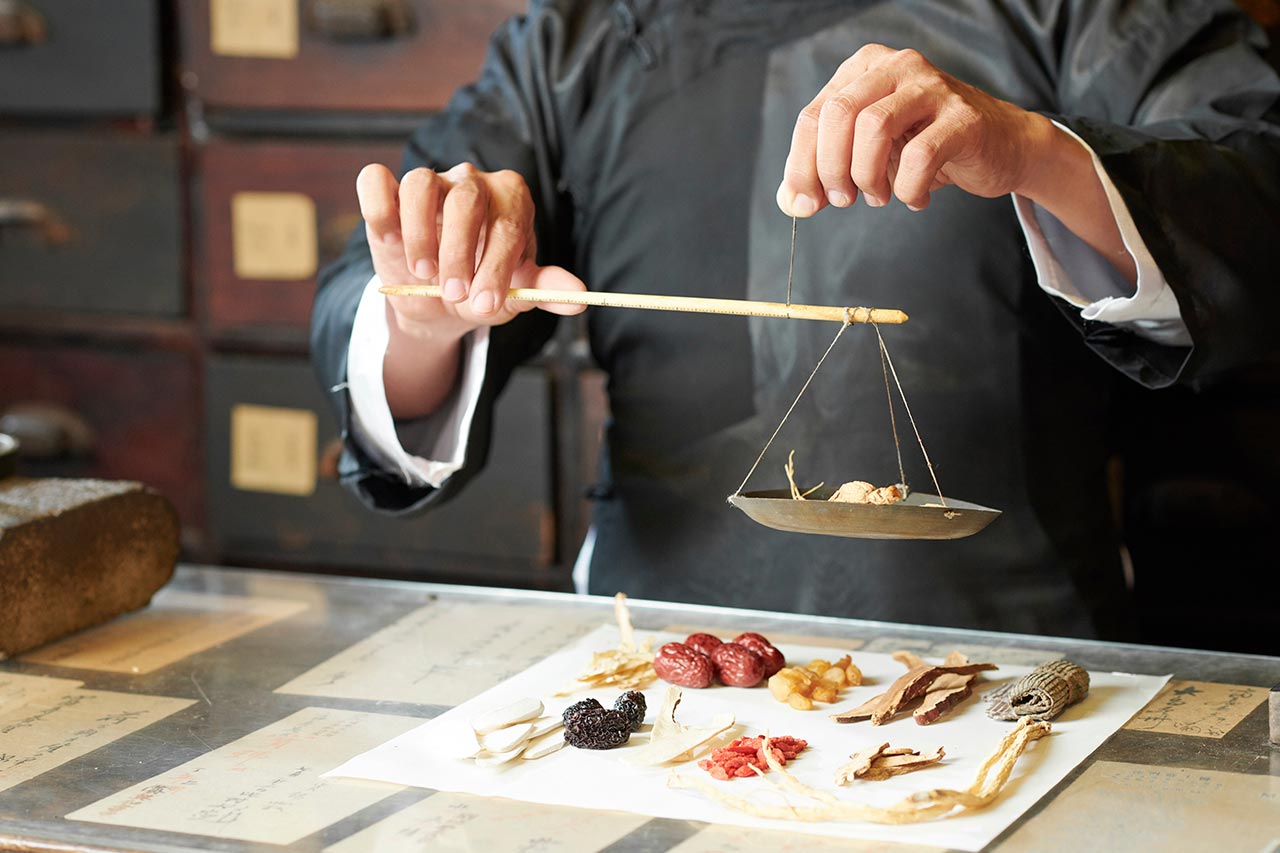Traditional Chinese Medicine: Current Landscape and Opportunities for the Pharma Industry

Traditional Chinese Medicine (TCM) often raises doubts with its unconventional use of tonics and needles to treat diseases. This ancient form of medicine has since been gaining acceptance outside of China and even being practiced by Western doctors in renowned hospitals. TCM has also grown into a huge industry. In China alone, sales revenue of TCM reached 742.7 billion yuan (an equivalent of about 96.6 billion euro) in 2017 [1]. The Alcimed Healthcare team attempts to challenge the stereotypes surrounding Traditional Chinese Medicine to present the facts and opportunities that lie ahead.
Traditional Chinese Medicine brings a different approach to overall wellbeing
With a history of 3,000 years, TCM is one of the world’s oldest form of medicine. It also has a radically different approach to disease as compared to its Western counterparts, as it combines medical knowledge with Chinese history and philosophy. Modern medicine focuses on providing disease-specific treatments or treating specific affected organs, while Traditional Chinese Medicine aims at strengthening the overall health of the individual.
TCM comprises of both oral interventions and externally administered treatments. Oral interventions can be loosely differentiated as herbal therapy and food therapy. It is believed that every individual is different and would require a specific combination of herbs and food to ensure a healthy body. Externally administered treatments mainly revolve around the idea of energy, or Qi. Acupuncture is one such external treatment that will be able to restore the disease-causing energy imbalance by unblocking key acupoints through which the energy flows.
Patients can benefit from TCM as a complementary treatment
One concern about the use of Traditional Chinese Medicine is the lack of rigorous scientific testing in proving safety and efficacy of treatment. Although not scientifically proven and thus not recommended to be a standalone treatment, TCM has been accepted as a complementary treatment in many diseases. In a systematic review by a group of UK-based scientists, herbal therapy has been found to improve quality of life in non-small cell lung cancer patients, where better weight stability and reduction in side effects of chemotherapy such as anemia, has been observed. The result raises the possibility of using TCM as adjuvant in non-small cell lung cancer chemotherapy to improve compliance [2]. Acupuncture has also been proven effective in providing pain relief for conditions such as chronic shoulder pain and migraine.
Even in the current coronavirus pandemic, Traditional Chinese Medicine has played an integral part in China’s fight against the virus. In the absence of global treatment guidelines, TCM has been employed as preventive remedy to hopefully boost immunity in the healthy population. TCM is also prescribed alongside anti-viral drugs mainly in patients with mild and moderate symptoms. The aim is to be both curative (complementing anti-viral drugs in fighting the viral infection) and restorative (reducing side effects of anti-viral drugs and boosting overall immunity). About 85% of COVID-19 patients in China has received TCM treatment [3]. Chinese Centre for Disease Control and Prevention has compiled comprehensive national guidelines on the use of TCM in the handling of COVID-19 infection. This has since been translated into English and French and shared with the WHO.
There is an increasing acceptance and use of TCM globally, which leads to investment by pharmaceutical companies
With increasing globalization and more acceptance of traditional healing methods, TCM has been gaining popularity outside of the Chinese community. In fact, many renowned hospitals outside Asia like John Hopkins Hospital (Maryland, USA) and University College London Hospitals (London, UK) have set up specialized department on alternative medicine, with TCM being one of the focus areas. Traditional Chinese Medicine is also included in 11th revision of the International Classification of Diseases, which is overseen by WHO. This is an unprecedented milestone for TCM as its way of disease diagnosis, treatment and prevention is finally acknowledged by such renowned global body.
The pharmaceutical industry has also been looking into TCM for possible drug candidates. One notable example is Artemisinin, an essential component of combination drug therapies to treat malaria. Artemisinin was derived from sweet wormwood, a commonly used herbs used in TCM. This discovery led to a Nobel Prize in Medicine for Tu Youyou in 2015. Novartis and Sanofi-Aventis are among the companies which have been producing artemisinin combination therapies drugs, with the support of WHO. Bayer also decided to enter the TCM market in 2014 by acquiring Dihon Pharmaceutical Group Co., Ltd., a privately held Chinese pharmaceutical company specializing primarily in over the counter and herbal TCM products. Through this acquisition, Bayer is looking to boost its research and development pipeline, while entering the highly lucrative TCM market.
About the author
Fiona, Consultant in Alcimed’s Healthcare team in Singapore
Delphine, Head of Healthcare activities in Alcimed’s team in Asia-Pacific
Do you have an exploration project?
Our explorers are ready to discuss it with you
[1] www.statista.com
[2] Chen, Sisi et al. Oral Chinese herbal medicine (CHM) as an adjuvant treatment during chemotherapy for non-small cell lung cancer: A systematic review. Lung Cancer, Volume 68, Issue 2, 137 – 145
[3] https://news.cgtn.com/news/2020-02-25/TCM-used-to-treat-85-of-COVID-19-patients-OmQG7PIGWs/index.html